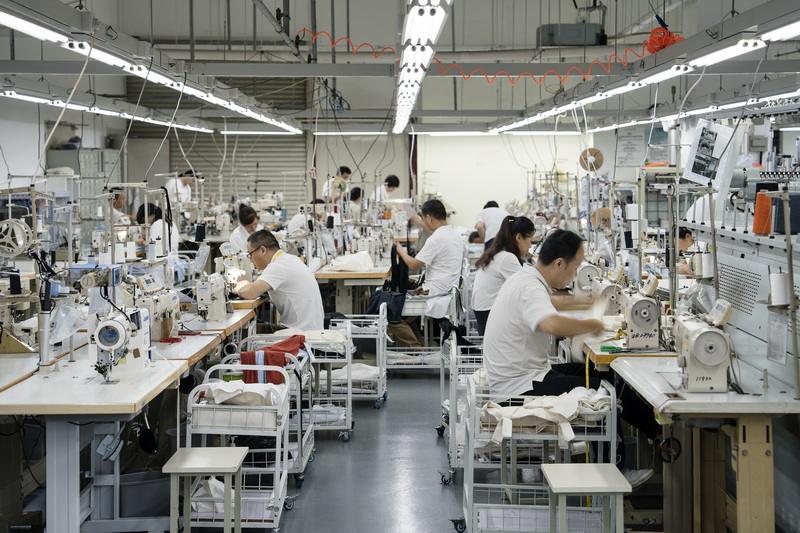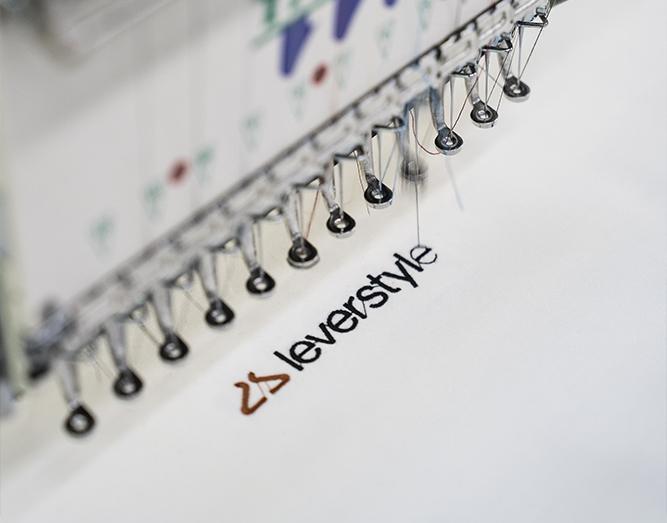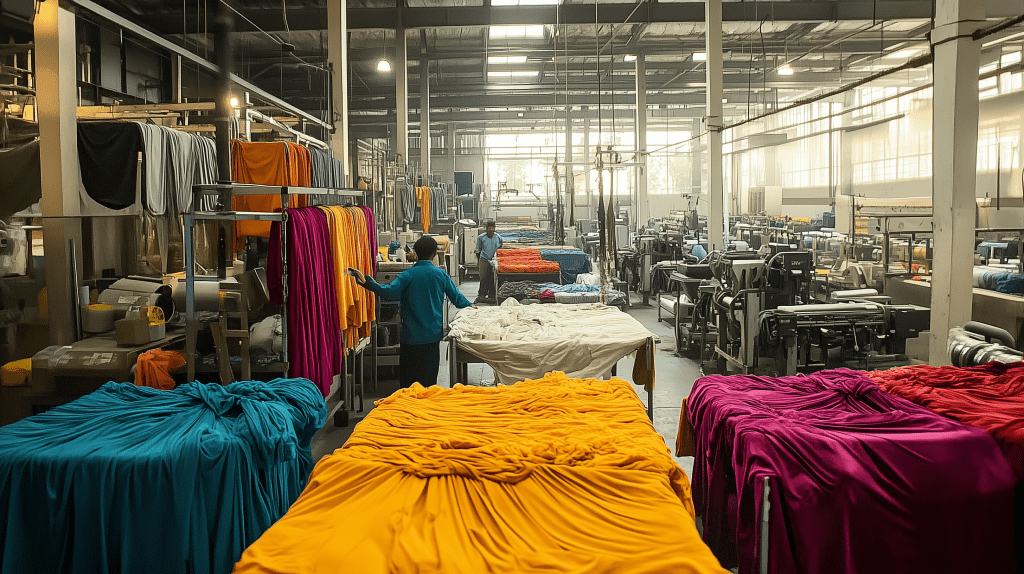Content Menu
● Understanding Wide Leg Yoga Pants and Traditional Yoga Leggings
>> What Are Wide Leg Yoga Pants?
>> What Are Traditional Yoga Leggings?
● Key Differences Between Wide Leg Yoga Pants and Traditional Yoga Leggings
>> 2. Fabric and Material Technology
>> 5. Style and Market Positioning
● Extended Insights into Wide Leg Yoga Pants
>> The Rise of Wide Leg Yoga Pants in the Activewear Market
>> Fabric Innovation and Sustainability
>> Technical Design Challenges and Solutions
>> Supply Chain Considerations for Wide Leg Yoga Pants
>> Marketing and Consumer Engagement
● Styling and Usage Considerations
● Frequently Asked Questions (FAQ)
>> 1. What fabric materials are commonly used in wide leg yoga pants?
>> 2. How do wide leg yoga pants compare in comfort to traditional yoga leggings?
>> 3. Can wide leg yoga pants be used for intense yoga workouts?
>> 4. Are wide leg yoga pants suitable for everyday wear?
>> 5. What are the key supply chain considerations when manufacturing wide leg yoga pants?
Yoga apparel has evolved significantly over the years, catering to both performance needs and fashion preferences. Among the many styles available, wide leg yoga pants have emerged as a distinctive and popular alternative to traditional yoga leggings. This article explores the key differences between wide leg yoga pants and traditional yoga leggings from a business and technical perspective, including fabric technology, design features, supply chain insights, and product development expertise. We will also discuss why wide leg yoga pants are gaining traction in the market and how they fit into the broader yoga clothing industry.

Understanding Wide Leg Yoga Pants and Traditional Yoga Leggings
What Are Wide Leg Yoga Pants?
Wide leg yoga pants are characterized by a loose, flowing silhouette that extends from the waist down to the hem, offering a relaxed fit around the legs. They typically feature a high-waisted design with an elastic or adjustable waistband to ensure comfort and support during physical activity. The fabric blends used for wide leg yoga pants often include polyester, spandex, nylon, modal, and sometimes sustainable fibers like banana plant-derived Barbados Sole, providing softness, breathability, and stretch.
What Are Traditional Yoga Leggings?
Traditional yoga leggings are form-fitting pants designed to hug the body closely from waist to ankle. They emphasize flexibility, support, and moisture management, often made from four-way stretch fabrics such as nylon-spandex blends that provide compression and durability. These leggings usually have a thick, high-rise waistband engineered to stay in place during dynamic yoga poses and workouts.
Key Differences Between Wide Leg Yoga Pants and Traditional Yoga Leggings
1. Design and Fit
– Wide Leg Yoga Pants: These pants offer a loose, flowing fit that does not cling to the legs. This design allows for greater airflow and comfort, especially in warmer climates or during less intense yoga sessions. The wide leg silhouette also creates a flattering, elongated look that can be styled beyond the yoga studio.
– Traditional Yoga Leggings: Designed to be tight-fitting, these leggings provide compression and muscle support. Their slim fit enhances movement precision and reduces fabric bunching, making them ideal for vigorous yoga practices or high-intensity workouts.
2. Fabric and Material Technology
– Wide Leg Yoga Pants: Typically made from lightweight, breathable fabrics such as polyester-spandex blends or modal with sustainable fibers. These materials emphasize softness, drape, and stretch without compromising durability. Many wide leg pants incorporate moisture-wicking and quick-drying properties to maintain comfort.
– Traditional Yoga Leggings: Use denser, performance-oriented fabrics with four-way stretch, often nylon and spandex blends. These fabrics are engineered for durability, squat-proof opacity, moisture management, and compression support. The fabric undergoes rigorous testing for stretch recovery, pilling resistance, and colorfastness after multiple washes.
3. Waistband Construction
– Wide Leg Yoga Pants: Usually feature a high-rise waistband with an adjustable drawstring or elastic band designed for a secure yet comfortable fit. The waistband is often softer and less compressive to complement the relaxed fit of the pants.
– Traditional Yoga Leggings: Characterized by a thick, structured, often double-layer waistband that provides firm compression and stays put during movement. This design helps minimize roll-down and offers abdominal support during intense physical activity.
4. Functional Features
– Wide Leg Yoga Pants: May include practical elements such as side pockets, which add convenience for everyday wear. The loose fit makes them versatile for casual, travel, or office wear in addition to yoga.
– Traditional Yoga Leggings: Typically focus on minimal bulk and streamlined design, often omitting pockets to prevent interference with movement. Their primary function is performance during yoga and fitness activities.
5. Style and Market Positioning
– Wide Leg Yoga Pants: Positioned as a hybrid between activewear and casual fashion, appealing to consumers who want comfort without sacrificing style. They are popular for their versatility, allowing wearers to transition easily from workout to social settings.
– Traditional Yoga Leggings: Marketed primarily as technical athletic wear, emphasizing performance, support, and durability. They appeal to serious yoga practitioners and fitness enthusiasts who prioritize function over fashion.

Extended Insights into Wide Leg Yoga Pants
The Rise of Wide Leg Yoga Pants in the Activewear Market
In recent years, wide leg yoga pants have experienced a surge in popularity, driven by consumer demand for versatile, comfortable, and stylish activewear. This trend aligns with the broader athleisure movement, where consumers seek apparel that performs well during exercise but also suits everyday wear. The wide leg yoga pants category benefits from this shift, offering a product that blends function with fashion.
This rise is also influenced by lifestyle changes, including the increase in remote work and casual dress codes, which have heightened demand for comfortable yet presentable clothing. Wide leg yoga pants meet this need perfectly, providing an elegant silhouette without sacrificing ease of movement or breathability.
Fabric Innovation and Sustainability
Wide leg yoga pants are at the forefront of fabric innovation, with many brands incorporating sustainable materials and eco-friendly production methods. Modal, a semi-synthetic fiber derived from beech trees, is favored for its softness and biodegradability. Additionally, fibers like Barbados Sole, sourced from banana plants, provide a unique combination of durability and natural sheen, enhancing both performance and aesthetics.
Sustainability is a critical factor in product development today. Brands investing in wide leg yoga pants often highlight their commitment to reducing environmental impact by using recycled polyester, organic cotton blends, and low-impact dyeing techniques. These efforts resonate strongly with environmentally conscious consumers, creating a competitive advantage in the marketplace.
Technical Design Challenges and Solutions
Designing wide leg yoga pants presents unique technical challenges compared to traditional leggings. The loose fit requires careful pattern making to ensure the pants drape elegantly without excess bulk or fabric weight that could hinder movement. The choice of fabric weight and stretch is crucial to maintain a balance between flow and functionality.
Waistband design is another area of focus. Unlike traditional leggings that rely on compression, wide leg yoga pants require waistbands that provide secure fit without constriction. Adjustable drawstrings, soft elastic bands, and wide waistbands with internal shaping panels are common solutions.
Manufacturers must also address issues related to fabric opacity and wrinkle resistance, as the flowing fabric can be prone to transparency and creasing. Advanced fabric treatments and blends are employed to overcome these challenges, ensuring the pants maintain a polished look throughout wear.
Supply Chain Considerations for Wide Leg Yoga Pants
From a supply chain perspective, wide leg yoga pants require coordination between fabric suppliers, manufacturers, and logistics providers to meet quality and delivery standards. The incorporation of specialty sustainable fibers often necessitates sourcing from niche suppliers, which can impact lead times and cost.
Manufacturing wide leg yoga pants demands skilled labor for pattern cutting and sewing, especially when integrating features like pockets and adjustable waistbands. Quality control processes are intensified to monitor fabric stretch, seam strength, and color consistency, ensuring products meet brand standards.
Logistics and inventory management must also adapt to the wider size ranges and varied color options typical for wide leg yoga pants collections, which cater to diverse consumer preferences.
Marketing and Consumer Engagement
Marketing wide leg yoga pants effectively requires educating consumers on their benefits compared to traditional leggings. Brands often leverage storytelling around comfort, versatility, and sustainability to differentiate their products. Visual campaigns highlight the pants’ flattering silhouette and styling options, appealing to fashion-conscious consumers.
Collaborations with yoga instructors, influencers, and wellness communities help build credibility and brand loyalty. Offering customization options and limited-edition prints can further enhance consumer engagement.
Styling and Usage Considerations
Wide leg yoga pants offer styling flexibility. They pair well with fitted tops to balance volume and create flattering silhouettes. Their relaxed fit is ideal for travel, lounging, and casual outings, making them a versatile wardrobe staple.
Traditional yoga leggings remain the go-to for high-performance yoga and fitness activities due to their compression and support. They are often preferred for indoor studio sessions and intense workouts.
Conclusion
Wide leg yoga pants differentiate themselves from traditional yoga leggings through their relaxed fit, fabric choices, and versatile styling. While traditional leggings focus on compression, durability, and performance for active yoga practice, wide leg yoga pants emphasize comfort, breathability, and fashion-forward design suitable for both yoga and everyday wear. From a product development and supply chain perspective, wide leg yoga pants incorporate innovative sustainable materials and practical features like pockets and adjustable waistbands, catering to a growing market segment seeking multifunctional activewear.
For brands and retailers, investing in wide leg yoga pants offers an opportunity to tap into the expanding yoga apparel market with products that meet evolving consumer demands for comfort, style, and sustainability. Whether for yoga studios, casual wear, or travel, wide leg yoga pants provide a compelling alternative that complements the traditional yoga legging.
Ready to elevate your activewear collection with premium wide leg yoga pants? Contact us today to explore our latest designs, fabric innovations, and customization options tailored to your brand’s needs. Let’s create the perfect blend of comfort, style, and performance for your customers.

Frequently Asked Questions (FAQ)
1. What fabric materials are commonly used in wide leg yoga pants?
Wide leg yoga pants are commonly made from blends of polyester, spandex, modal, and sometimes sustainable fibers like Barbados Sole derived from banana plants. These fabrics offer softness, breathability, stretch, and durability suitable for both yoga and casual wear.
2. How do wide leg yoga pants compare in comfort to traditional yoga leggings?
Wide leg yoga pants provide a looser, more breathable fit that enhances comfort, especially in warmer weather or for low-impact activities. Traditional yoga leggings offer compression and support but may feel more restrictive.
3. Can wide leg yoga pants be used for intense yoga workouts?
While wide leg yoga pants are excellent for comfort and style, traditional yoga leggings with compression and structured waistbands are generally better suited for intense yoga sessions due to their support and durability.
4. Are wide leg yoga pants suitable for everyday wear?
Yes, wide leg yoga pants are highly versatile and can transition from yoga practice to casual outings, travel, or even office wear when styled appropriately. Their relaxed fit and practical features like pockets enhance their everyday usability.
5. What are the key supply chain considerations when manufacturing wide leg yoga pants?
Key considerations include sourcing sustainable and high-quality fabrics that balance softness and durability, ensuring precise manufacturing for loose fits and waistband construction, and maintaining rigorous quality control for stretch retention, colorfastness, and fabric performance.
Hot Tags:
Wide Leg Vs Leggings, Yoga Pants Styles, Loose Fit Yoga Pants, Yoga Bottoms Comparison, Traditional Yoga Leggings, Wide Leg Activewear, Yoga Pants Fit Guide, Relaxed Yoga Apparel, Yoga Fashion Differences, Yoga Wear Types
